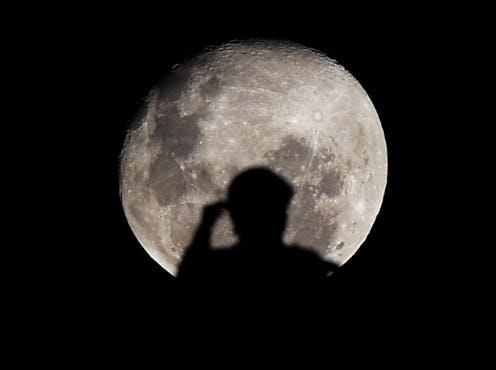News
We've Been Lied To
On Friday, stargazers will have a rare opportunity. The night sky will shine from the blue moon, according to NASA. But exactly what is a blue moon? It turns out that it's definitely more than just a beer, but it also isn't quite what you think it is.
A blue moon actually has nothing to do with the color blue, or any color at all. According to NASA Science News, the term "blue moon" is based in modern folklore, and describes the second full moon in a calendar month. Typically, there is just one full moon each month, but this July there will be two — one on July 2nd, and again on July 31. The event is rare — once in a blue moon, one could say — but the moon will not actually be blue. Yes, I know it's disappointing.
The name of the phenomenon might be misleading, but the phrase derived from is not. According to Sky and Telescope magazine, there are, on average, 29 and a half days between two full moons. For two to occur in one calendar month, the first full moon has to happen early on, and the second towards the end — a fairly rare occurrence.
So why is the second full moon in a month called a blue moon in the first place? Prior to the 1940s, the Maine Farmers' Almanac defined a blue moon as a moon that aligned with various strange dates, such as certain religious events. Confused? According to NASA Science News, most people didn't understand this definition either. To clarify the confusion, Sky and Telescope magazine published an article in 1946 called "Once in A Blue Moon." The author, James Hugh Pruett, made a mistake and wrote that the Almanac defined it as the second full moon in a month, which is now the popular definition. Sky and Telescope then started using the definition Pruett wrote about, later admitting their mistake in a 1996 article, but acknowledging that the misnomer can't really be fixed. The magazine wrote in 2006, "The second-full-Moon-in-a-month (mis)interpretation is like a genie that can't be forced back into its bottle."
Is it possible for the moon to look blue? Yes! A moon that is actually colored blue occurs when there is dust in the atmosphere. Larry Ciupik, an astronomer at the Adler Planetarium in Chicago, told NBC Chicago that this could happen on Friday if atmospheric conditions are just right, but it's unlikely. NASA Science News says that volcanic eruptions and forest fires cause true blue moons. The ash fills the sky and basically acts as a filter for red light, making the moon look blue.
So don't let the headlines fool you. This Friday, the moon will be full, but probably not blue.
